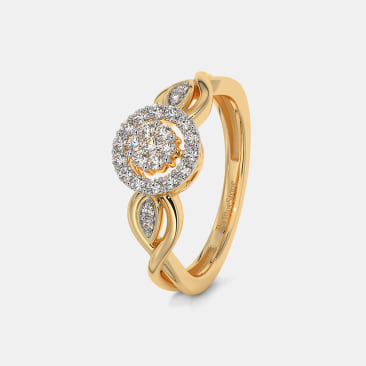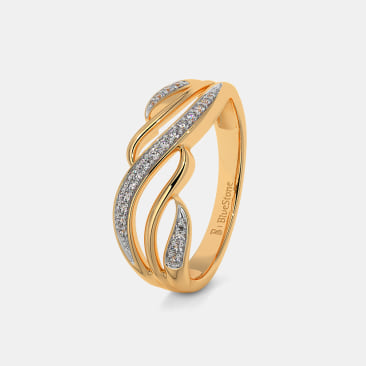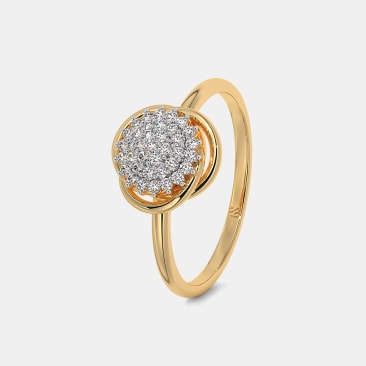Diamond Cut
If you are asked to select between a princess and a cushion, what would you opt for? There’s nothing wrong if you go with the princess and give the cushion a miss. But for many others, the cushion may hold more attraction than the princess. In fact, the cushion has been ruling over hearts of people for more than 100 years now. Wondering who would prefer a cushion over a princess?
Well, a lot of people would when the terms princess and the cushion refer to two different styles of diamond cuts. Yes, we are talking about the cuts that make your diamonds shine brilliantly. When you want your diamond to be a real sparkler, you need to consider its cut. So here’s all that you need to know about a diamond cut.
What’s Diamond Cut?
The cut of a diamond refers to its facet alignment, proportions, and finish. It does not refer to the diamond’s shape, which indicates the overall form of the stone, such as round, oval, square, etc. Of the 4Cs that define a diamond’s value factor, the cut quality is the only one that is the result of human effort. A good cut gives the diamond its fire and brilliance. When properly cut and shaped, a diamond’s ability to reflect and refract light increases greatly. So, a well-cut diamond will appear to shine brightly while a poorly cut one may seem to be lifeless.
Diamonds have been present on earth for billions of years. But it’s only a few hundred years ago when man learnt that a diamond’s beauty can be transformed by giving it a proper cut. Since then, different styles of diamond cuts have been developed to enhance the stone’s material properties. Whether you want to buy solitaire diamond rings or a classic pair of diamond earrings, a basic understanding of the cut will help you to make a wise buying decision.
How Does a Cut Unleash a Diamond’s Brilliance, Fire, and Sparkle?
A diamond with a good cut exhibits three different properties namely, brilliance, fire, and sparkle. Here’s what each of these means:
Brilliance: As light hits a diamond’s surface, it either enters the stone or gets reflected off its polished surface. This internal and external reflection of light that you can see in a diamond is known as its brilliance.
Fire or Dispersion: When light travels through the diamond, some of the rays are broken down into a rainbow of colours and reflects off the stone’s interior surfaces before reaching your eyes in colourful flashes. Fire is this spectrum of colours that you can see.
Sparkle or Scintillation: If you move the diamond back and forth, you can witness a pattern of dark and light areas and flashes of coloured light emitting the stone. This is a dynamic effect and is known as a diamond’s sparkle.
A well-cut diamond unleashes these three qualities as it helps to direct light through its top. Each diamond cut has a distinctive facet pattern. Light bounces off these facets before escaping from the stone. These unique facet patterns provide each shape a unique brilliance. But the brilliance of every individual stone is affected by the quality of its cut. The cut quality depends on how well the proportions, polish, and symmetry of the stone produces an attractive balance of brilliance, fire, and sparkle. So, if the round brilliant diamond in your pendants shines brightly, it doesn’t mean every round brilliant diamond will do so equally. The stone must have a very good cut to earn its spot among the dazzling lot.
The Different Styles of Cut
The popular diamond cut styles are:
Brilliant Cut Style: In this style, the facets are cut in a way so as to maximise the brilliance of the diamond. The classic round cut is classified as brilliant cut.
Step Cut Style: This cut style has facets running parallel to each other and to the edge of the diamond. Due to the presence of stepped facets, it is named thus. Asscher, emerald, and baguette cut come under this style.
Mixed Cut Style: This is a blend of brilliant and step cut styles. It combines the optical effect of the brilliant style with the dimension of step cuts. The princess cut is a popular cut representing this style.
Fancy Cut Style: This style includes any cut that is not a classic round cut. Among the fancy cuts are the heart cut, the pear cut, and the oval cut.
A List of Popular Diamond Cuts and Shapes
Let’s take a look at some of the popular diamond cuts and shapes that you are likely to see when you go shopping for various types of jewellery, like diamond bracelets, pendants, nose pins, etc.
Round Cut: It is the most popular cut used for shaping diamonds and gemstones. The USP of this cut is its incredible brilliance. The brilliant round cut is considered by many as the classic diamond cut.
Princess Cut: This cut displays the sparkle of the brilliant cut in a rectangular outline. It is the second most popular cut. If you are looking for a square or rectangular diamond with lots of sparkle, this cut can be a good choice.
Asscher and Emerald Cuts: The emerald cut displays rectangular shape with trimmed corners in step cut style. The square version of it is called an Asscher cut. These two cuts differ just in their outlines. They are not as brilliant as the princess cut.
Cushion Cut: They are square or rectangular in shape with rounded corners. This gives them a pillow-like look and hence, the name. This cut displays much brilliance.
Radiant Cut: Yet another brilliant cut, it has a square or rectangular shape. It has some features of the emerald cut as well.
Oval Cut: A modified form of the round cut, it also displays much brilliance. An oval cut is a great choice for stones mounted in gold rings.
Marquise Cut: An oval-looking outline with two pointed ends defines the marquise cut. This cut is good for diamonds that need to be mounted in jewellery.
Pear Cut: This cut has an almost oval shape, but a pointed end gives it the impression of a pear. It has features of both the oval cut and the marquise cut. In other words, it looks like a teardrop.
Heart Cut: This cute cut is similar to the pear cut. But the rounded end has a cleft, which makes it look like a heart. It is one of the most popular cuts for making rings.
Trillion Cut: This unique cut has a triangular outline. The ends of this shape can be pointed or rounded.
How to Select a Diamond That Sparkles?
Since all diamonds don’t sparkle equally, you need to select your diamonds with care. Here are a few tips to help you out:
Inspect the diamond under various light sources: Examine the diamond under spot lighting that is not overwhelming and then under diffused lighting. View it in a mixed lighting atmosphere. Finally, look at it in natural daylight. This way you will be able to see the various elements that produce the sparkle.
Keep the cutting style in mind: Remember that the more facets the stone has the more light it will reflect. If you want ample sparkle in any other shape except round, try to find one in brilliant faceting style.
Be sure of the cut quality: Just the cut style isn’t enough. The quality has to be good as well. If you are not sure of the cut quality, go for a certified diamond. You will have all the details in the diamond report.
So, next time you purchase a piece of diamond jewellery, don’t just buy it blindly. Take a careful look at the product details where the cut and other details of diamonds are mentioned. Also, certain cuts like the marquise an oval make a stone look bigger than it actually is. So, if you are looking for a bigger bang for the bucks you spend, go for them.




